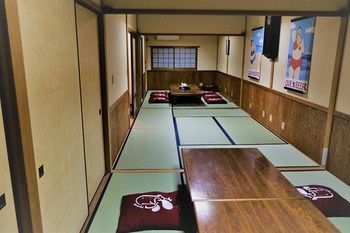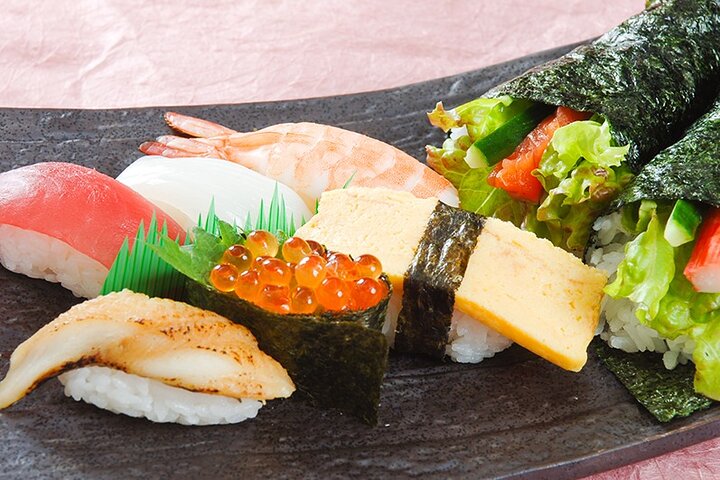Why choose this Kyoto tour ?
Explore Kyoto in Style and Comfort!
Discover the magic of Kyoto on our exclusive private day trip by car.
Your day, your way. We customize the itinerary to match your interests and preferences.The trip showcases a variety of temples and shrines in a day
-including Kinkaku-ji, Kiyomizu-dera, Fushimi Inari-taisha Shrine, and the bamboo forest in Arashiyama.
As it’s a private trip, the itinerary can be customized based on your requests.
Say goodbye to crowded buses and trains. Our private car ensures a comfortable and efficient journey between sites, maximizing your sightseeing time.
No rush, no fixed timetable. You decide how long you want to spend at each stop. We’re here to accommodate your pace.
Book our Private Kyoto Day Trip by Car today and create unforgettable memories in this enchanting city!
Make the most of your Kyoto adventure
What makes Kyoto Highlight Customize Tour With English Speaking Guide a unique experience ?
A significant Shinto shrine located in southern Kyoto is called Fushimi Inari Shrine (Fushimi Inari Taisha). It is well-known for the thousands of red torii gates that cross a system of paths that run behind the major structures. The paths lead into the forested area of the holy Mount Inari, which is located on the shrine grounds and rises to a height of 233 meters. Of the thousands of shrines devoted to Inari, the Shinto god of rice, Fushimi Inari is the most significant. Since foxes are believed to be Inari’s messengers, there are numerous fox statues scattered across the shrine grounds. The history of Fushimi Inari Shrine dates back to a time before Kyoto became the capital in
794. While exploring the mountain paths is the main reason most international visitors come to Fushimi Inari Shrine,
One of Japan’s most well-known temples is Kiyomizudera, which translates to “Pure Water Temple”. It got its name from the pristine waters of the Otowa Waterfall, which is located on the forested hillsides east of Kyoto, where it was established in
780. The temple established the Kita Hosso sect in
1965 after first being connected to the Hosso sect, one of the oldest schools of Japanese Buddhism. The temple was included as a UNESCO World Heritage Site in 1994. The most notable feature of Kiyomizudera is its wooden stage, which protrudes 13 meters over the surrounding hillside from the main hall. Visitors can enjoy a pleasant view of the many cherry and maple trees below, which burst into a sea of color, from the stage.
One of Japan’s most well-known temples is Kiyomizudera, which translates to “Pure Water Temple”. It got its name from the pristine waters of the Otowa Waterfall, which is located on the forested hillsides east of Kyoto, where it was established in
780. The temple established the Kita Hosso sect in
1965 after first being connected to the Hosso sect, one of the oldest schools of Japanese Buddhism. The temple was included as a UNESCO World Heritage Site in 1994. The most notable feature of Kiyomizudera is its wooden stage, which protrudes 13 meters over the surrounding hillside from the main hall. Visitors can enjoy a pleasant view of the many cherry and maple trees below, which burst into a sea of color, from the stage.
Arashiyama is the Togetsukyo Bridge, also known as the “Moon Crossing Bridge”. It was most recently rebuilt in the 1930s after being created during the Heian Period (794-1185). The bridge appears especially lovely against the backdrop of the wooded slope. Adjacent to the bridge is a riverbank park dotted with scores of cherry trees. HAMMOOSE GROVES Nice walks and bicycle rides can be had along the walking routes that go through the bamboo trees. When there is a light wind and the long bamboo stalks softly move back and forth, the woods become very picturesque. Bamboo has been utilized for generations in local workshops to make a variety of goods, including mats, cups, boxes, and baskets.
The Kyoto Imperial Palace (Kyoto Gosho) used to be the residence of Japan’s Imperial Family until 1868, when the emperor and capital were moved from Kyoto to Tokyo. It is located in the spacious Kyoto Imperial Park (Kyõto Gyoen), an attractive park in the center of the city that also encompasses the Sento Imperial Palace and a few other attractions. The current Imperial Palace was reconstructed in 1855 after it had burnt down and moved around town repeatedly over the centuries. The complex is enclosed by long walls and consists of several gates, halls and gardens. The enthronement ceremonies of Emperors Taisho and Showa were still held in the palace’s main hall. Tokyo Imperial Palace is now used for enthronement ceremonies.
Gion, the most well-known geisha neighborhood in Kyoto, is situated along Shijo Avenue between the Kamo River to the west and Yasaka Shrine to the east.
Shops, restaurants, and ochaya (teahouses) abound, offering entertainment by geiko (Kyoto’s dialect for geisha) and maiko (geiko apprentices). Gion’s significant concentration of classic wooden machiya merchant houses draws tourists. The homes were constructed with slender facades that are only five to six meters wide but extend up to twenty meters in from the street because property taxes were previously determined by street frontage. Hanami-koji Street, which runs from Shijo Avenue to Kenninji Temple, is the busiest section of Gion. The street and its side alleyways are lined with beautiful, lovely, and pricey places to eat.
The upper two floors of the Zen temple Kinkakuji (Golden Pavilion), located in northern Kyoto, are entirely coated with gold leaf. Originally called Rokuonji, the temple served as Ashikaga Yoshimitsu’s retirement residence. Following his death in 1408, the shogun left it as a Zen temple belonging to the Rinzai sect. Ashikaga Yoshimasa, the grandson of Yoshimitsu, erected Ginkakuji (Silver Pavilion) on the opposite side of the city a few decades after seeing Kinkakuji. The only remaining building from Yoshimitsu’s former retirement community is Kinkakuji, an elegant temple erected overlooking a big pond Throughout its history, it has burned down multiple times, twice during the Onin War, a civil war that devastated a great deal of
Nishiki Market (Nishiki Ichiba) is a narrow, five block long shopping street lined by more than one hundred shops and restaurants. Known as “Kyoto’s Kitchen”, this lively retail market specializes in all things food related, like fresh seafood, produce, knives and cookware, and is a great place to find seasonal foods and Kyoto specialties, such as Japanese sweets, pickles, dried seafood and sushi. Nishiki Market has a pleasant but busy atmosphere that is inviting to those who want to explore the variety of culinary delights that Kyoto is famous for. The stores found throughout the market range in size from small narrow stalls to larger two story shops. Most specialize in a particular type of food, and almost everything sold at the market is locally produced and procured.
Sanjusangendo Sanj sangend is the prevalent title for Rengeo in, a sanctuary in eastern Kyoto which is celebrated for its 1001 statues of Kannon, the goddess of leniency. The sanctuary was established in 1164 and modified a century afterward after the first structure had been devastated in a fire. Measuring 120 meters, the sanctuary lobby is Japan s longest wooden structure. The title Sanjusangendo truly 33 interims determines from the number of interims between the building s back columns, a conventional strategy of measuring the size of a building.
Tour Description & Additional Info:
- Wheelchair accessible
- Public transportation options are available nearby
- Specialized infant seats are available
- Transportation options are wheelchair accessible
- Suitable for all physical fitness levels
Options To Choose for Your Trip:
- Kyoto Highlight Tour With English Speaking Guide
Add
Luxury Car
Pickup included
- Entry Tickets Are Included
- English-Speaking Driver
- English Speaking Guide
- Pick-up and Drop-off to Hotel And Others Locations Where You Want
Not Included
- Any Special Ride or Cruise not Included in this Package
Trending Kyoto Nearby Tours Likely To Sell Out
Special Instructions:
- This Tour is Provided by TOKYO TRAVEL & TOUR.
- Tour Timezone & Starts at Asia/Tokyo.
- Mobile or paper ticket accepted.
- For a full refund, cancel at least 24 hours before the scheduled departure time.
- Minimum 1 Travelers is required to book.
- Maximum 6 Travelers is accepted for booking.










